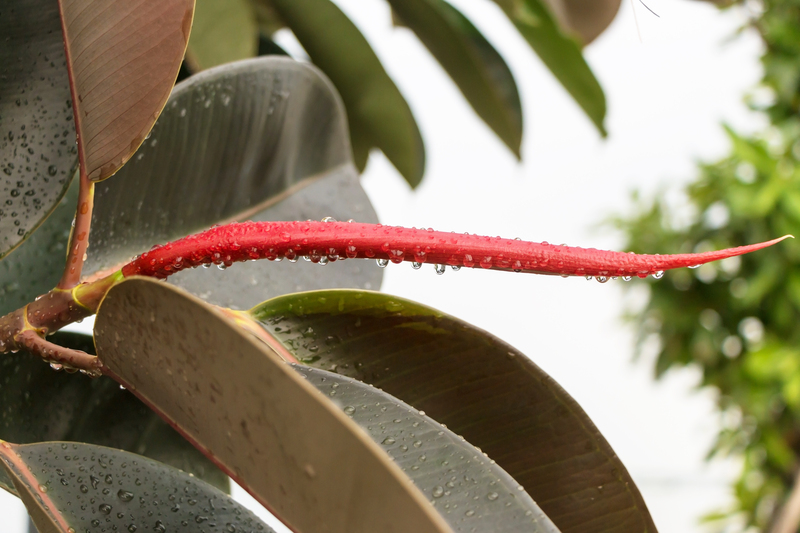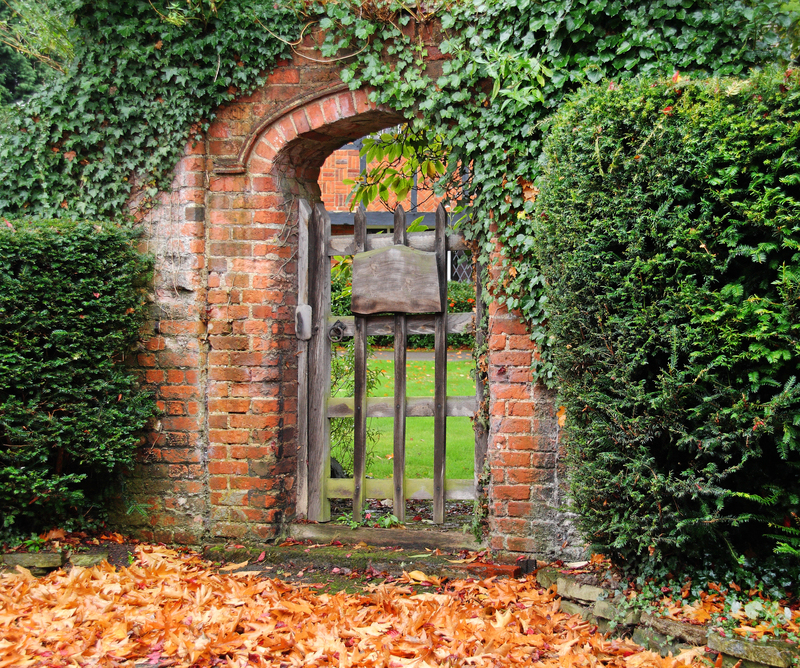Design a Lush Playground in Your Backyard for Little Ones
Posted on 23/09/2025
Design a Lush Playground in Your Backyard for Little Ones
Transforming your backyard into a lush playground for little ones combines the joys of outdoor play with the beauty and tranquility of nature. Well-designed backyard play spaces nurture physical health, encourage imagination, and create memorable childhood experiences. Whether you have a small yard or a sprawling garden, this comprehensive guide will help you craft the perfect play haven for your children.
Why Create a Lush Playground at Home?
Creating a backyard children's playground allows you to control the environment, ensuring safety, fun, and a connection with nature. Kids benefit from unstructured play in green spaces, gaining confidence, developing motor skills, and fostering social growth. Moreover, a lush play area can become a sanctuary for your family, offering a retreat from screens and structured activities.

Key Elements of a Lush Backyard Playground
A well-rounded play space for kids seamlessly blends playful features with natural beauty. Consider including the following essentials:
- Outdoor play equipment (e.g., swings, slides, climbing frames)
- Natural elements (e.g., grass, trees, flower beds, rocks)
- Safe surfaces (e.g., rubber matting, mulch, soft grass)
- Flexible spaces for various types of play
- Shaded areas for protection from the sun
- Cozy nooks for quiet time and relaxation
Prioritizing Safety Above All
Safety is paramount when designing a lush backyard playground. Keep these guidelines in mind as you plan:
- Install soft, shock-absorbing surfaces beneath climbing equipment
- Avoid sharp corners or protruding hardware
- Regularly inspect and maintain all equipment
- Ensure play areas are visible from the house
- Use non-toxic, child-safe materials and plants
Tip: Include fencing or natural borders to delineate play zones and prevent unsupervised wandering.
Step-by-Step Guide to Creating a Lush Playground
Step 1: Evaluate Your Space
Begin by assessing your backyard's size, sunlight exposure, terrain, and existing landscaping. Consider how much space you can dedicate to a backyard play area for kids while preserving room for gardens, pets, or adult relaxation.
- Measure all dimensions and draw a rough layout
- Note shaded vs. sunny spots
- Identify existing trees, slopes, and structures
Step 2: Choose a Theme or Style
A cohesive theme adds charm and excitement. Some popular lush playground themes include:
- Enchanted woodland (logs, fairy houses, native plants)
- Jungle adventure (tall grasses, climbing ropes, stepping stones)
- Nature explorer (mini gardens, bug hotels, water features)
- Classic playground (swings, slides, sandbox, vibrant colors)
_Choose a theme that complements your landscaping and reflects your child's interests._
Step 3: Plan Play Zones
Divide the space into dedicated play zones for little ones catering to different activities and moods.
- Active play area: Install swings, slides, and climbing frames on soft surfaces.
- Creative play zone: Add a sandbox, water table, or mud kitchen to encourage sensory play.
- Quiet nook: Create a cozy spot with benches, hammocks, or reading tents under shady trees.
- Gardening corner: Set aside a section for child-friendly gardening and plant observation.
Zoning lets kids explore and play freely while remaining safe and engaged.
Step 4: Integrate Greenery and Nature
A lush playground feels inviting and healthy with ample plants and green surfaces. Use these tips to infuse nature:
- Opt for soft grass or ground cover as the main surface.
- Plant child-safe shrubs and flowers for color and scent (e.g., lavender, sunflowers, snapdragons).
- Include shady trees for natural cooling and climbing fun (e.g., willow, maple, fruit trees).
- Build living tunnels or teepees with fast-growing vines like beans or sweet peas.
- Add sensory plants like lamb's ear (soft leaves), mint (fragrant), and nasturtiums (edible blooms).
_Choose native plants to support pollinators and reduce maintenance._
Step 5: Select Age-Appropriate Play Equipment
Prioritize quality, safety-certified playground equipment tailored to your children's ages and interests:
- Swings with secure harnesses
- Low slides and climbing walls for toddlers
- Balance beams, stepping stones, and logs
- Treehouses or elevated platforms for older kids
- Open spaces for ball games, hopscotch, or tag
Remember: Equipment should allow for growth and adaptability as your child ages.
Step 6: Incorporate Sensory Experiences
Sensory-rich environments are crucial for developing brains and keep play engaging. Include:
- Water play (small fountains, splash pads, or trickling streams)
- Sand and pebbles for tactile exploration
- Wind chimes or musical instruments for auditory stimulation
- Herb gardens to engage smell and taste
- Colorful visual features (painted rocks, vibrant flowers, flags)
_Underline the value of sensory learning by making these features accessible and safe._
Step 7: Ensure Year-Round Enjoyment
A truly lush and inviting playground adapts to every season. Consider:
- Evergreen plants and shrubs for winter color
- Deciduous trees for summer shade and autumn play
- Mulched paths to keep mud at bay
- Removable sunshades and canopies
- Shelters or pergolas for rainy-day play
Top Tips for a Stunning, Child-Friendly Oasis
Use Natural Boundaries
- Hedges, bamboo screens, or wooden fences provide privacy and wind protection.
- Living borders with lavender, rosemary, or flowering shrubs are fragrant and safe.
Keep Maintenance Manageable
- Choose hardy, low-maintenance ground covers.
- Install drip irrigation systems or rain barrels for easy watering.
- Simplify by grouping plants with similar needs.
Personalize with DIY Touches
- Paint stepping stones or pebble mosaics together as a family project.
- Hand-build fairy houses, bug hotels, or small vegetable beds.
- Create signs or name plates for each play zone.
Choose Eco-Friendly Materials
- Opt for untreated wood, recycled plastics, and natural stone.
- Avoid synthetic turf and harsh chemicals.
Encourage Free Play & Imagination
- Leave open spaces for tree stumps, fort-building, or hopscotch.
- Arrange loose parts like pine cones, sticks, and shells for creative construction.
Best Plants for Lush Backyards Safe for Children
Not all garden plants are child-safe. Prioritize non-toxic, resilient varieties for your child's outdoor play yard:
- Sunflowers: Tall, fun, and easy to grow
- Lavender: Fragrant, repels pests, and soothes
- Nasturtiums: Edible flowers in bright colors
- Mint: Hardy, fragrant, and fun for sensory play (but keep in a pot)
- Blueberries: Delicious, low bushes for snacking
- Lamb's ear: Soft, velvety leaves children love to touch
- Willow: Easy to shape into tunnels and dens
_Avoid thorny, toxic, or allergenic species. If unsure, research before planting._
Budget-Friendly Backyard Playground Ideas
Designing a lush play area for young kids doesn't require breaking the bank. Try these affordable solutions:
- Construct a simple sandbox with untreated wood and clean sand
- Repurpose pallets for climbing frames, balance beams, or outdoor seating
- DIY stepping stones with concrete and leaves for imprints
- Weave living willow dens for shade and imaginative play
- Recycle old tires into swings, tunnels, or planters
- Use rope and fabric for homemade climbing nets or hammocks
Maximize creativity and family bonding by involving kids in the planning and making of their playground!

Frequently Asked Questions About Designing a Lush Playground
What is the best ground surface for a lush, safe playground?
A mix of natural grass, mulched areas, and rubber matting provides both softness and durability. Avoid concrete and stones in high-activity zones.
How do I ensure my playground is safe?
- Use certified play equipment and install shock-absorbing surfaces.
- Fence the area or use natural borders.
- Choose non-toxic, non-allergenic plants and avoid choking hazards.
- Regularly inspect and maintain all elements.
What's the benefit of a lush playground compared to buying a plastic playset?
A lush, natural play space offers sensory richness, environmental benefits, improved imaginative play, and fosters a lifelong love of nature. It blends with your garden and grows as your family does.
Can I design a lush playground in a small yard?
Absolutely! Focus on vertical spaces, multi-purpose equipment, and compact features like a sand pit, potted plants, or hanging swings. Even the smallest patio can feel lush with clever design and greenery.
Conclusion: Build Memories in Your Backyard Oasis
A lush backyard playground for little ones provides more than play--it's a nurturing environment where children develop, explore, and connect with family and nature. By combining child-safe plants, creative play zones, and eco-friendly materials, you create a timeless retreat for your family. Start your lush playground transformation today and enjoy treasured moments in your own vibrant, living backyard haven!
Ready to inspire creativity and adventure? Let your imagination bloom and design a lush playground your children will never forget!

